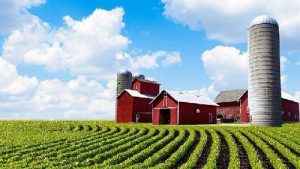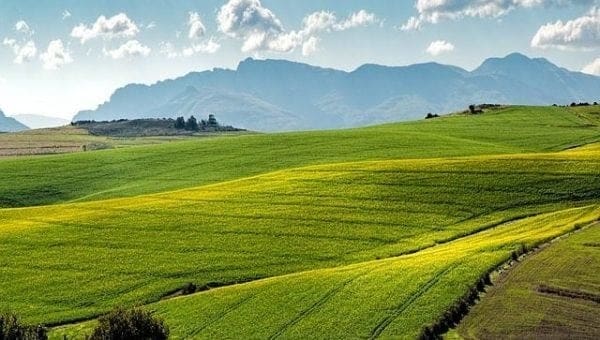Kenneth Brown
of The Crossroads
Seeding has pretty much wrapped up for the 2018 growing season. Experts say the conditions for seeding were excellent and now growers need precipitation.
It was raining in the west central region on Wednesday and there is more rain in the forecast in the coming week. According to forecasts by The Weather Network, there is a 90 per cent chance of rain for today and Monday for places from Unity to Leader and Oyen to Harris.
 The most recent Saskatchewan crop report available in time for publication covered the period from May 15 to 21. Crop reports are released each week on Thursday, so a new report covering the period from May 22 to 28 will have been released yesterday.
The most recent Saskatchewan crop report available in time for publication covered the period from May 15 to 21. Crop reports are released each week on Thursday, so a new report covering the period from May 22 to 28 will have been released yesterday.
According to the report from May 15 to 21, significant seeding progress had been made in west central Saskatchewan and 66 per cent of the crop had been seeded by May 21. For southwestern Saskatchewan, an area that includes Elrose, Kyle and Leader, 72 per cent of the crop had been seeded by May 21.
The five-year seeding average for west central Saskatchewan for the crop report period is 59 per cent complete and the average is 70 per cent for southwestern Saskatchewan, so both of the regions were ahead of their five-year averages.
Topsoil moisture is different for the two neighbouring regions at the time of the report. Topsoil moisture was 70 per cent adequate and 30 per cent short in west central Saskatchewan, and 49 per cent adequate, 30 per cent short and 21 per cent very short in southwestern Saskatchewan. The Harris area has received 49 mm of precipitation since April 1 to lead both the region and the province, the report states.
[emember_protected for=”2″ custom_msg=’For more on this story, please see the Jun. 1 print edition of The Cross Roads.’]
Pasture land topsoil is dryer than the cropland topsoil. The report says hay land and pasture topsoil was 49 per cent adequate and 51 per cent short in west central Saskatchewan as of May 21, and 33 per cent adequate, 46 per cent short and 21 per cent very short in southwestern Saskatchewan.
John Ippolito, a crop specialist at the Saskatchewan Agriculture office in Kindersley, said he believes growers in the region he covers have all but finished getting their seed in the ground by May 30, and soil conditions were favourable in the region.
He noted that the only seeding-related calls he received this week were from farmers planting greenfeed for livestock, so growers planting wheat, pulse and oilseed crops have finished seeding from what he could tell. Ippolito said he did not see a single unseeded field on his drive to work on Tuesday.
Several areas received moisture through parts of April and he said the moisture prior to seeding helped out quite a bit. Ippolito said measurements he took just after the middle of May showed there was an average of roughly 18 inches of moist soil for parts of the region.
Certain areas received moisture in September, but not all areas were as fortunate and the precipitation in the early spring built up a bit of stored moisture to get the season started, Ippolito said. Crops are getting off to a decent start.
“The surface has started to dry, but there still is some moisture down below,” he said, recognizing that it had been three weeks with little to no rain in the area. “What we’re seeing and hearing now is most of the crop emergence is actually happening okay. Crop emergence looks not bad.”
There are canola fields in the area that could struggle with emergence until there is a good rainfall, so the emergence might not be even across the fields, Ippolito said. However, he said there is another concern for canola crops.
He noted that the flea beetle is proving to be a concern for growers in the region and growers in the area have started to spray insecticide. He said it is hard to know how widespread the concern is with the flea beetle, but the combination of slow emergence and flea beetle population is causing problems. Better emergence should allow the canola to grow through the concern, but canola has gotten off to a slow start.
The specialist said it was a unique start to the season for growers in west central Saskatchewan because there were no weather-related stoppages during seeding for most farmers in the region. He said current conditions will support crops in the near future.
There were concerns going into the growing season due to the lack of snow to replenish soil moisture, he said. Fields in the area had surplus moisture going into the 2017 season, but a dry growing season in 2017 depleted the soil of that moisture. Ippolito said there was enough runoff to fill up most ground water supplies.
Jeremy German, the head agronomist at G-Mac’s AgTeam Ltd., said in the 10 years he has worked in the area, this year is the fastest he has seen growers put in their crops from start to finish. Seeding got off to a late start, but several farms seeded their fields in record time, he said.
The late winter snow and early spring rain in April was fantastic for the region, he said. There were better seeding conditions in the first two weeks of May due to adequate moisture, but the fields will need rain soon.
“I think the crops can hold on for a week or two, but we’re going to need to see some moisture in the next week for some fields,” German said, recognizing that there was a decent base for the crops. “Some of the heavier land could certainly hold on for a couple weeks without an issue.”
He said there could still be a couple of farms north of the Kindersley area that need to finish seeding, but he believes there is less than 10 per cent of land waiting to be seeded in the area. It only took about three weeks for most producers to finish.
German also mentioned the flea beetle as one concern growers are chasing at the moment. According to the expert, there has been a shift from the crucifer flea beetle to the two-striped flea beetle. He said the two-striped species is a more aggressive feeder than the crucifer.
He noted that an insecticide is put on canola and mustard seed to help. The slow emergence of canola has been a problem because the flea beetles are biting into the stem instead of the leaves, so growers are losing entire plants, he added.

